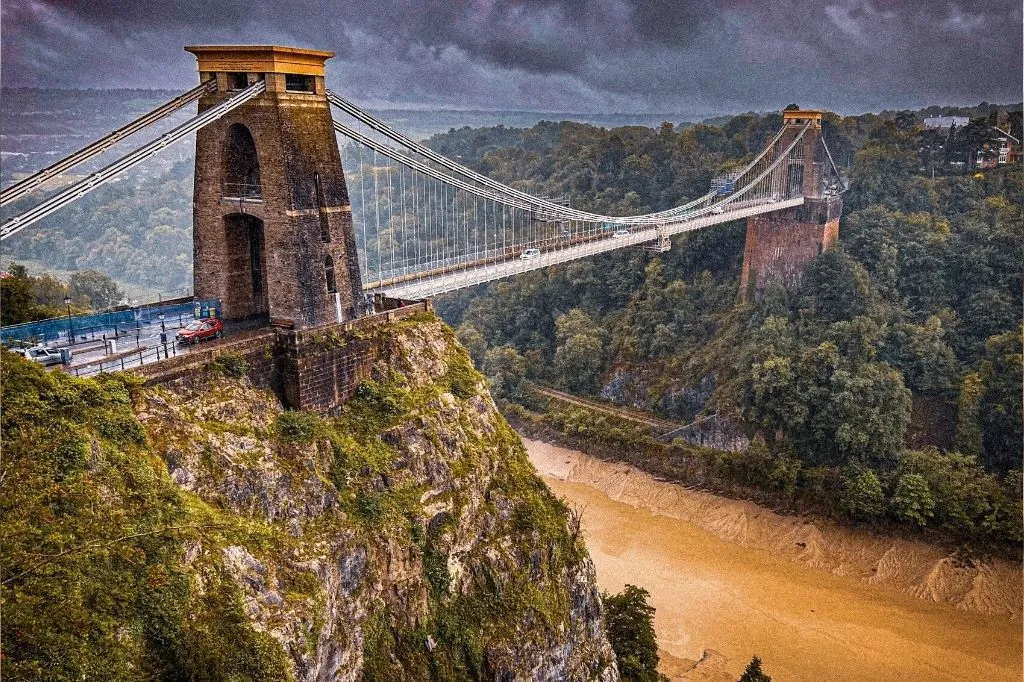Is the Clifton Suspension Bridge all we, the general public, know about Brunel? And if that’s so, why was he voted the 2nd Greatest Briton after Churchill and before Newton, Darwin and Shakespeare?
That was the extent of my knowledge about him, and some vague notion that he had something to do with railways. So I wanted to find out more about this man, what did he do, and what was his legacy?
But I didn’t want to learn from a history book or a Wiki-google search. I wanted to see his legacy. I wanted to get on my push-bike and ride from Bristol to London, Brunel to Brunel and The Great Western Way to touch, feel and experience the mark Brunel left on the countryside.
The Route
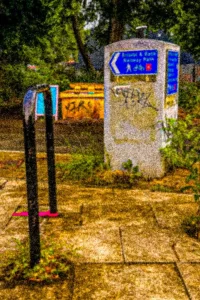
Photo by Graham Caldow
My Brunel and The Great Western Way route is divided into 3 Parts:
First, Brunel in Bristol, and three major landmarks that are very visible in the city: the Clifton Suspension Bridge, the SS Great Britain and Temple Mead Railway Station.
Second, The Great Western Way because it’s safe, easy, mostly flat cycling, and it passes many of Brunel’s landmarks as it follows canals, rivers and vales.
Third, 168 miles later, Brunel in London at the Brunel Museum. In London there’s also Paddington Railway Station and a statue of Brunel sitting in pride of place. Here is a good place to reflect on him, his achievements, and his legacy to us all.
Maps and routes of this journey can be found at Sustrans. It’s often marked as Route 4.
Part I:
From Brunel’s Bristol
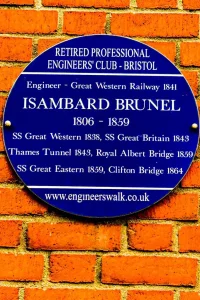
Photo by Graham Caldow
Isambard Kingdom Brunel (1806-59) was considered one of the most visionary and daring engineers of the industrial revolution. Maybe not all his projects were successful, but they often contained innovative solutions to long-standing engineering problems. His legacy was to reshape Britain’s infrastructure and to show what immense ambition can achieve.
That is why I’m interested to find out what we can learn from someone like him. Hence Bristol seemed the perfect place to start my bike ride, starting with the Clifton Suspension Bridge.
The Clifton Suspension Bridge
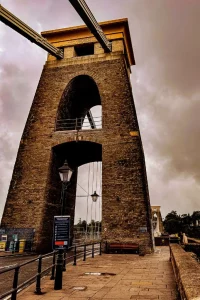
Photo by Graham Caldow
The bridge crosses over the River Gorge to join the village of Clifton with Bristol. Building work started in 1831 but halted later that year because of the Bristol Riots.
The Bristol Riots riots started because the House of Lords rejected the Second Reform Bill, which aimed to get rid of some constituencies (electoral areas) with low representation. Sparsely populated areas was often seen as an easy way to get into / be elected to Parliament by the sort of men who stood for election only to gain power and influence.
Dalay to completing the Bridge also happened because of budgetary concerns, and the bridge wasn’t finally opened until 1864, 5 years after his death.
At the time of opening, it was the longest chain suspension bridge in Britain (and the world) even though Brunel’s design was modified.
I can tell you from cycling across, it is very high, and the road is narrow. Many tourists come to visit but avoid looking down as they walk across. It is an impressive monument to Victorian engineering still.
The SS Great Britain
The SS Great Britain was built in Bristol and launched in 1843. At the time, she was by far the largest ship ever built at 322 ft (98m) long and a marvel of engineering. She was the first ocean-going vessel to combine an iron hull with a screw propeller and had secondary masts for sail power.
With a crew of 120, she was able to carry 360 passengers among her four decks. The space of the cabins varied by class and price of passage. When she first crossed the Atlantic, she landed in New Yor in just 14 days.
Later she served as a passenger liner carrying many thousands to Australia before she was retied to the Falklands, where she served as a haul, a ship afloat but no longer able to cope with the ravages of open sea. Indeed, most ships at this time served longer as hulk ships as accommodation and cargo storage vessels than ocean-going vessels.
She was scuttled in 1937 but resurrected by Sir Jack Arnald Hayward in 1970. He paid for her to be repaired enough to be towed back to dry dock in Bristol, where she was restored as a museum ship.
Visiting Information: SS Great Britain.
It’s a good morning’s entertainment and learning, and for those really interested it could be a whole day. I thoroughly enjoyed my visit, and wish I could’ve stayed longer to read some of the personal histories of its passengers. What I took from my visit was an appreciation of Brunel’s ability and willingness to incorporate the latest ideas in his designs to innovate and make groundbreaking engineering advances.
Ship’s Captains
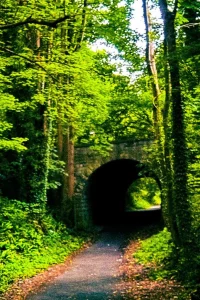
Photo by Graham Caldow
